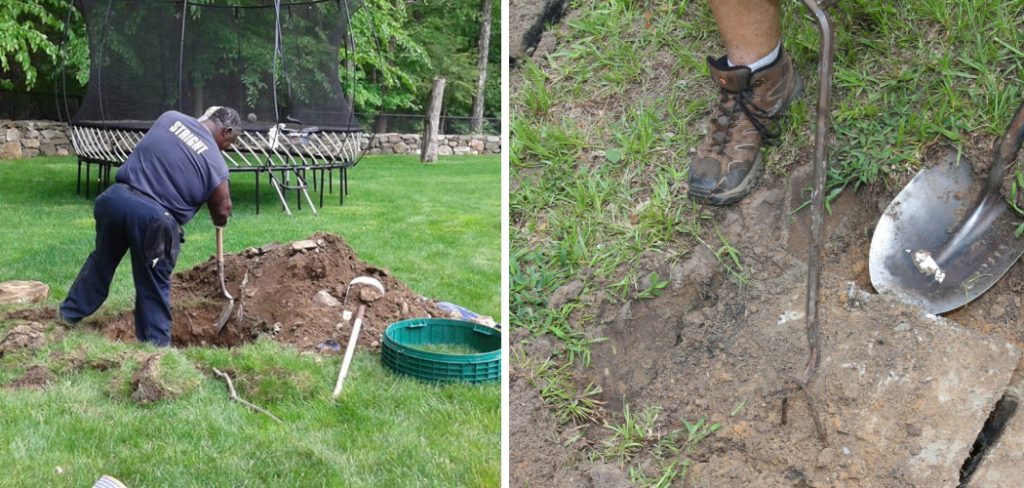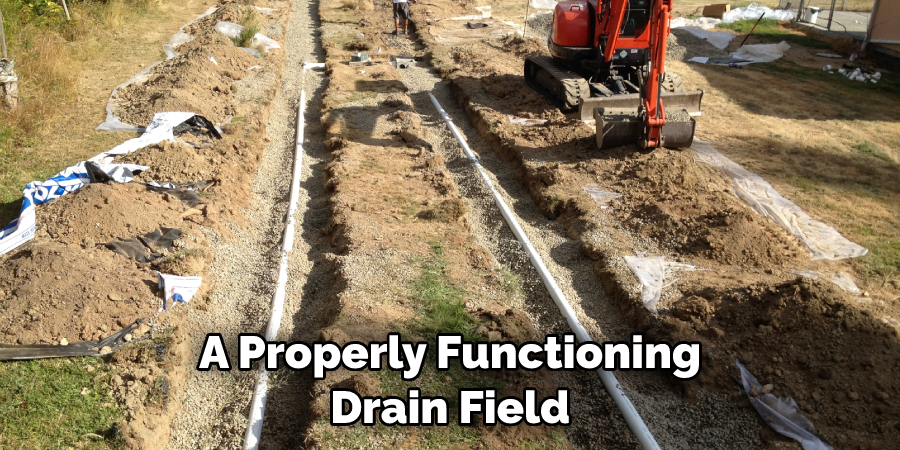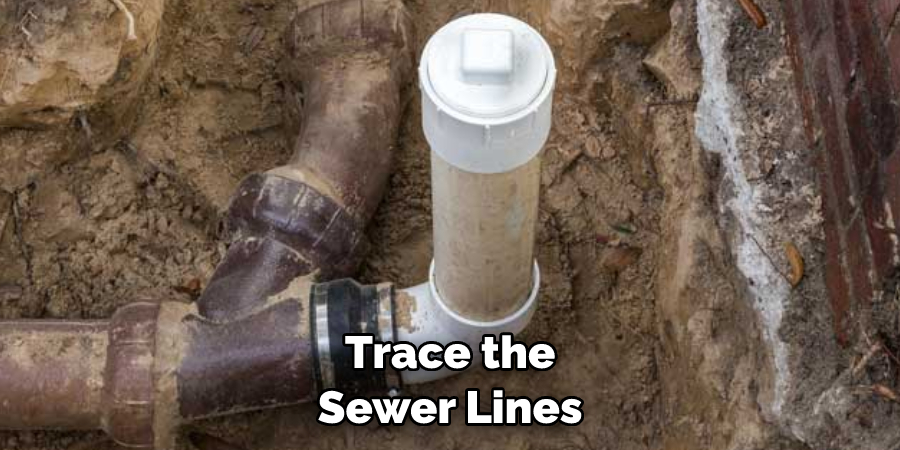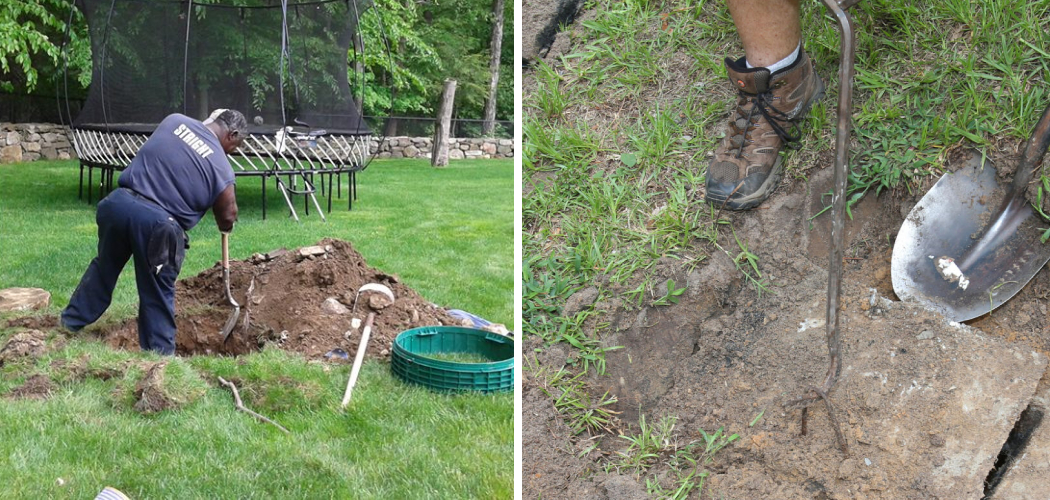If you have a septic system but don’t know where your drain field is located, don’t worry. A lot of people don’t realize it until they experience problems with their septic system. But locating the drain field on your property doesn’t have to be tricky or overwhelming – it’s simply a matter of following some easy steps in order to pinpoint its exact location.

In this blog post, we’ll discuss how to find your drain field and what steps should be taken if you need assistance from a professional. You’ll also learn what kind of repairs may need to be done once the location has been identified, so keep reading!
Why Is it Important to Find Drain Field?
Finding your drain field is important for a variety of reasons. Your drain field is the last line of defense when it comes to protecting your home from sewage backups, flooding, and other water damage. It also helps to keep the soil around your home healthy and prevents groundwater contamination.
A properly functioning drain field can help maintain the structural integrity of your septic system and prevent costly repair bills in the future. Additionally, knowing the exact location of your drain field can help you develop proper landscaping plans that won’t interfere with its function or put any unnecessary stress on your septic system.

Knowing where to find your drain field not only gives you peace of mind but could also save you time and money in the long run. Therefore, it is essential to find your drain field and make sure that it is functioning properly. Knowing its exact location can help you and any professionals you hire in the future to take care of your septic system.
This will not only reduce the potential for costly repairs but also give you the assurance that your home and property are safe from any possible water damage. Finding and understanding your drain field is an important part of proper septic system maintenance and should be done regularly to ensure the health and safety of your home.
Where Is the Best Place for a Drain Field?
When it comes to choosing a location for your drain field, there are a few considerations you should make. Firstly, the area must be away from any water sources such as rivers or lakes. Additionally, it is important to choose an area with a stable soil type that can easily absorb and distribute the effluent from the septic tank.
A sloping land type is ideal, as this will help ensure that the effluent can flow away from the tank without becoming stagnant. Finally, you should also avoid areas with high groundwater levels or steep slopes, as they could interfere with the system’s functioning. Ultimately, it is best to consult a professional to determine where your drain field should be located for optimal performance.

10 Methods How to Find Your Drain Field
1. Consult the Property Blueprint:
If you have access to the property blueprint or septic system diagram, it may indicate the location of the drain field. This is especially helpful for newly built or recently surveyed properties. If the property blueprint is unavailable, you can contact your local health department for assistance in locating it.
However, this may take a few days or even weeks, depending on the backlog of requests. While it may be a lengthy process, this is the best option if you want an accurate location of your drain field.
2. Check the Septic System Record:
Contact the local health department or the agency responsible for septic system regulation in your area. They may have records of your property’s septic system, including the drain field location. If not, they can give you advice on how to proceed.
Though the records may not provide you with a blueprint of your drain field’s layout, they can give you an idea of where to begin looking. Additionally, they may be able to provide advice on how best to locate the drain field in your specific location.
3. Follow Sewer Lines:
Trace the sewer lines from your house to the septic tank. The drain field is typically located downhill from the septic tank, so you can follow the sewer lines to identify the general area of the drain field.

If you can’t access the sewer lines, look for an indication of dirt or grass that is a slightly different color or texture than the surrounding area. This is a sign of recent excavation and could indicate the location of the drain field. However, if you’re still unsure of its exact location, you may need to call a professional.
4. Look for Lush Vegetation:
Drain fields can often promote the growth of lush vegetation due to the nutrients released by the septic system. Look for areas of the yard where the grass or plants appear greener and healthier. If you have a septic tank, chances are the drain field is in close proximity.
Additionally, if you notice any foul odors coming from the yard, it could be a sign that the septic system is not working properly and needs to be serviced. While this is not definitive proof of the location of the drain field, it can be a good indicator that you are looking in the right area.
5. Monitor Soil Moisture:
The drain field may have slightly higher moisture levels than the surrounding area. Walk around your property after a period of rain or irrigation and look for areas where the ground remains damp or spongy. A wet spot could indicate that your drain field is located in that area.
You may also be able to identify the presence of water seeping through the ground by looking for lush vegetation in an otherwise dry area. If you suspect that a certain area is the location of your drain field, use a soil probe to test the soil moisture and get an accurate reading.
6. Use a Probe or Metal Detector:
You can use a long probe or a metal detector to locate buried components of the septic system, including the drain field. Carefully probe the ground in the suspected area, and if you encounter resistance, it may indicate the presence of underground components.
If the probe is pushed too far into the ground, however, or not used carefully enough, it may damage the integrity of your septic system components. As such, probe usage should be done using extreme caution and best left to a septic system professional who has training in its proper use.
7. Hire a Professional Locator:
Consider hiring a professional septic system locator or an experienced plumber who can use specialized equipment, such as ground-penetrating radar or electronic locators, to precisely locate your drain field. This is often the most efficient and accurate way of determining where your drain field is located.

While this is the most expensive option, it may be worthwhile to pay for a professional locator if you’ve been unable to locate your drain field on your own or if you’re planning to dig in the area and need an exact location.
8. Check for Vent Pipes:
Vent pipes are typically installed on or near the drain field and protrude vertically from the ground. Look for small pipes sticking out of the ground, often capped with a vent or filter. If you find a vent pipe, it’s likely that the drain field is located nearby.
If you have difficulty locating the vent pipes, try using a sewer camera to help you identify their location. Though this is not a necessary step in finding the drain field, it can be helpful. While you’re inspecting the area, make sure to check for any signs of damage or deterioration that could indicate a problem with your drain field.
9. Examine Previous Maintenance Records:
If you’ve had the septic system serviced or pumped in the past, check the maintenance records. The technician may have noted the location of the drain field during the inspection. This can provide a handy reference if you’re having trouble finding the drain field. Make sure to keep all of your maintenance and service records in an organized, easily accessible place.
10. Seek Advice from Neighbors:
If you live in a community with similar septic systems, your neighbors may have knowledge about the approximate location of their drain fields. Their insights can provide valuable clues about the placement of your own drain field. While each system is likely to be unique, your neighbors may have useful ideas or tips about how far away the drain field should be from the house and drainage features on your property.
Conclusion
In conclusion, you are now equipped with all the necessary steps to finding your drain field. From understanding how septic tanks and drain fields interact to proper techniques for uncovering the parts of the system, locating and identifying a drain field doesn’t have to be a tiresome task.
Still, if it does seem overwhelming, it’s always best practice to contact a professional plumber or septic company who can ensure your safety while doing a more thorough job than would be possible for most homeowners. So, there you have it – a quick and easy guide on how to find your drain field.

